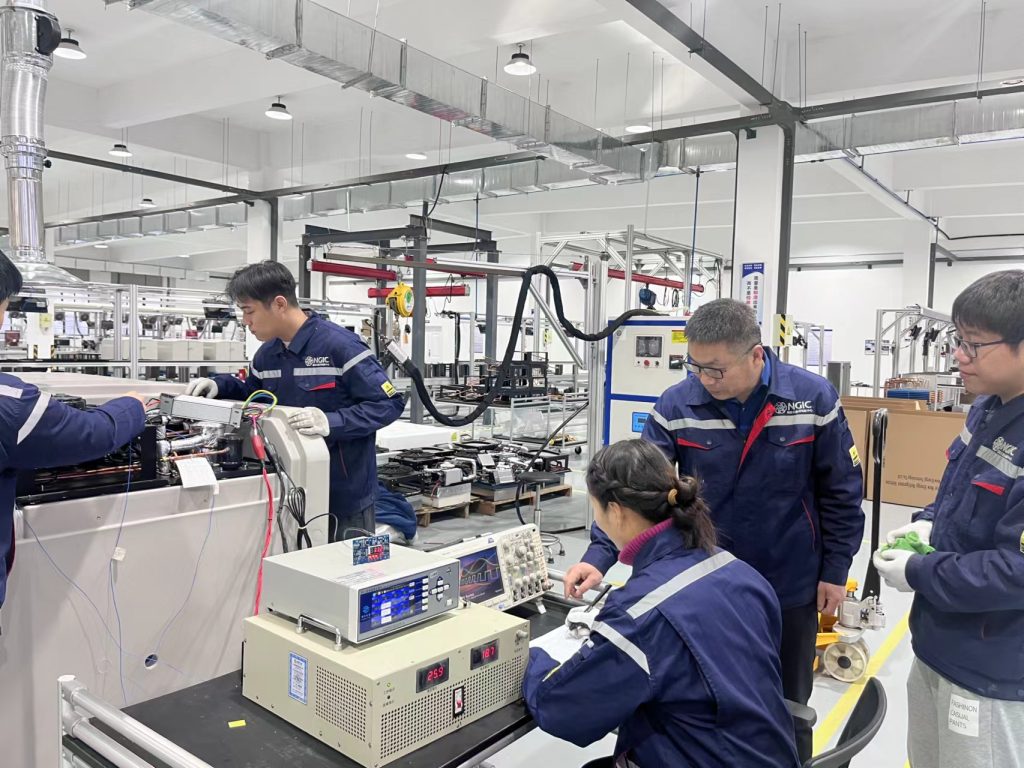Reducing Energy Costs in Cold Chain Transportation: The Role of Graphene-Based Cooling Systems
Introduction
Cold chain transportation plays a crucial role in preserving perishable goods, including food, pharmaceuticals, and biological materials. However, energy costs remain a significant challenge for logistics companies, with traditional refrigeration units consuming large amounts of fuel and electricity. As the demand for more sustainable and cost-effective solutions rises, graphene-based cooling systems are emerging as a game-changer in cold chain logistics.

The Challenge of High Energy Consumption in Cold Chain Logistics
Cold chain refrigeration systems are among the largest energy consumers in logistics operations. Key issues include:
- High fuel and electricity usage – Traditional refrigeration units rely on diesel-powered systems or inefficient electrical compressors.
- Inconsistent cooling efficiency – Frequent temperature fluctuations lead to overcompensation, increasing energy waste.
- Heavy reliance on fossil fuels – Diesel-powered refrigeration contributes to high operating costs and carbon emissions.
- Battery drain in electric refrigerated vehicles – Cooling systems significantly impact EV range and require optimized energy management.
Graphene-enhanced cooling systems provide a breakthrough solution to these challenges, offering superior thermal conductivity, faster cooling, and improved energy efficiency.
How Graphene-Based Cooling Systems Reduce Energy Costs
Graphene is a revolutionary material with exceptional heat dissipation and conductive properties. When integrated into refrigeration technology, it significantly enhances cooling performance while reducing energy consumption. Here’s how:
1. Improved Thermal Conductivity for Faster Cooling
Graphene has high thermal conductivity, allowing refrigeration units to distribute cold air more efficiently. This enables:
- Faster temperature drop – Achieving -15°C in just 30 minutes, reducing overall cooling time.
- Lower compressor workload – Less energy is required to maintain target temperatures.
2. Energy-Efficient Temperature Regulation
Traditional refrigeration units often overcompensate for temperature fluctuations, leading to excessive energy use. Graphene-based cooling systems use smart thermal regulation, which:
- Stabilizes temperatures more effectively, reducing energy spikes.
- Optimizes cooling cycles, ensuring only the necessary amount of power is used.
3. Lower Power Consumption in Electric Refrigerated Vehicles
For electric refrigerated trucks, energy efficiency is critical. Graphene cooling systems:
- Reduce battery consumption, extending vehicle range.
- Enhance compatibility with renewable energy sources, such as solar-assisted refrigeration.
4. Reduction in Refrigerant Usage
Graphene-based systems require less refrigerant to achieve the same cooling effect, which:
- Lowers operational costs associated with refrigerant refills.
- Reduces environmental impact, as many refrigerants contribute to global warming.
Real-World Applications: Cost Savings in Action
Companies already adopting graphene-based refrigeration technology are seeing significant cost savings and efficiency improvements. Here are some examples:
1. Electric Cold Chain Fleets
A logistics company tested graphene-enhanced cooling in its electric refrigerated fleet, reducing battery power consumption by 20%, leading to longer driving ranges and lower energy costs.
2. Fresh Food Distribution
A seafood distributor switched to graphene-based refrigeration, cutting electricity costs by 35% while maintaining consistent ultra-low temperatures.
3. Pharmaceutical Cold Storage
A medical supply company using graphene cooling reported 25% lower energy usage, ensuring temperature stability for vaccines and biologics while reducing operational expenses.
The Future of Cost-Efficient Cold Chain Logistics
The cold chain industry is moving towards more energy-efficient and environmentally friendly solutions. Graphene-based cooling systems align with key trends, such as:
- Increased adoption of electric refrigerated vehicles
- Integration of IoT and AI for real-time energy management
- Stronger regulatory push for lower carbon emissions
Conclusion
As energy costs continue to rise, the need for high-performance, cost-effective cooling solutions in cold chain logistics is more urgent than ever. Graphene-based refrigeration systems provide a sustainable, energy-efficient, and cost-saving alternative to traditional cooling methods.
Logistics companies looking to reduce energy costs, improve efficiency, and stay ahead of industry trends should explore graphene-enhanced refrigeration as the next-generation solution for cold chain transport.
Are you ready to optimize your cold chain logistics with cutting-edge graphene technology? Let’s connect and discuss how we can help you achieve lower costs and higher efficiency!

